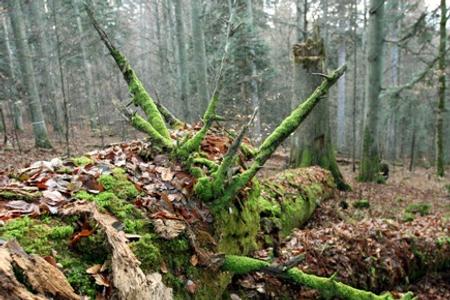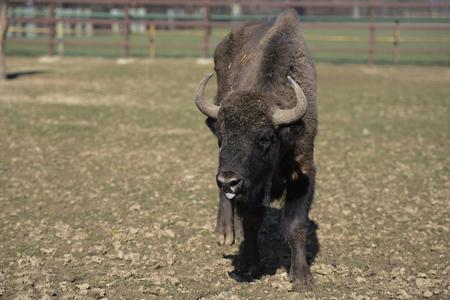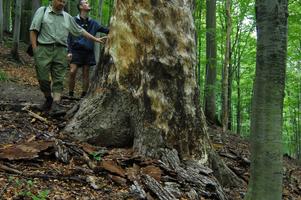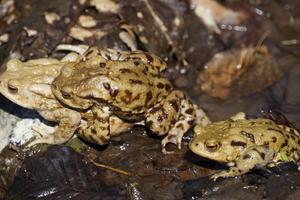The Slovak Supreme Audit Office (NKÚ) has found several flaws in the protection of the Carpathian primeval beech forests situated in the Poloniny National Park (NP) which are listed as a UNESCO site.
The results of the full audit will be announced by NKÚ head, Karol Mitrík, during the cabinet's February 14 session.
NKÚ advises Slovak government
The audit office warned that under current circumstances, the inscription on the UNESCO world heritage list may be threatened.
“The main problem remains the legislative defining of the activities of the State Natural Protection of Slovakia (ŠOP SR), which is primarily focused on tasks of environmental protection,” NKÚ spokesperson Daniela Bolech Dobáková said, as quoted by the Sme daily. “This organisation has limited possibilities in terms of financing, insufficient staff levels, limitation of development activities – as it is not the owner or manager of the areas lying in the NP Poloniny.”
Thus, NKÚ recommends the cabinet re-evaluates and elaborates on a draft of alternative ways of controlling the territory of the bio-spherical reserve, analyses the needs of legislative changes in the locality’s management and governance, and boosts the position of the bio-spherical reserve.

The audit office also deemed the issue of ownership rights important, especially for the highest-level protection areas.
Auditors recommended the Environment Ministry include the issue of this natural reserve in the Concept of Protection of Nature and Landscape that is now being prepared and update the Strategy of the ŠOP SR development, stressing the governance of localities with international importance.
The Foreign Affairs Ministry has been recommended to coordinate the process of updating the map of international the bio-spherical reserve in NP Poloniny according to the current state.
NKÚ recommendations evaluated positively
“Some reservations are rooted in the current, generally valid setting of nature protection,” Environment Ministry spokesman Tomáš Ferenčák reacted, as cited by Sme. “Thus, we evaluate very positively the NKÚ recommendations. Basically, they proposed some changes we are working on.”
These include the possibility to move part of the area owned by state under the ŠOP SR administration, drafting an amendment to the law on environmental protection for localities, etc.
As for other flaws, some positive changes have already been made, Ferenčák suggested, while some more are expected after the ŠOP SR undergoes organisational transformation.
WWF unhappy with the vague measures
Less than a week earlier, on February 9, the World Wildlife Fund (WWF) warned that the draft of measures for the Carpathian primeval beech forests – but also for other European regions – elaborated on jointly by the Environmental, Agricultural and Foreign Affairs Ministries are too vague and unspecific, and do not secure full protection for the region composed of four parts in Slovakia and some more in Ukraine, which have been listed as UNESCO world heritage sites.

WWF called on Slovakia in July 2017 to ultimately define the borders of its locality and buffer zone, secure protection against logging and wildlife hunting, finish the integrated management plan and support sustainable tourism.
Despite acknowledging some progress in this field, the WWF nevertheless states that the report on the Slovak part of the Ancient and Primeval Beech Forests of the Carpathians and Other Regions of Europe is too general, unspecific and an insufficient reaction to the calls of the UNESCO World Heritage Committee. In other words, it fails to secure the protection of these forests, head of WWF in Slovakia Miroslava Plassman pointed out, as quoted by the SITA newswire.
What are the Carpathian primeval forests?
The primeval forests in the NP Poloniny were inscribed on the List of the Biggest UNESCO World Heritage sites in 2007, among the most important global cultural and natural monuments. The inscription, initiated by the joint nomination of Slovakia and Ukraine, took place on June 28, 2007, in Christchurch, New Zealand, the TASR newswire wrote.
Four localities of beech primeval forests – National Natural Reserves: Stužica, Havešová, Rožok and Vihorlat – had been prepared by the Environment Ministry and the Technical University in Zvolen which specialises in forestry for seven years, TASR reported.
The inscription involves cross-border world heritage that is composed of 10 individual localities of which four lie in Slovakia and six in Ukraine, along an axis 185 kilometres long, from the Rachiv Massif to the west, along the Poloniny Ridge all the way to the Bukovské and Vihorlatské Hills in Slovakia.
The forest received this inscription because of its intact and virgin character which represents the climax of a natural environmental system. The act also obliges both countries to protect and preserve this unique, natural and untouched habitat.



 The Carpathian primeval beech forests (source: TASR)
The Carpathian primeval beech forests (source: TASR)


